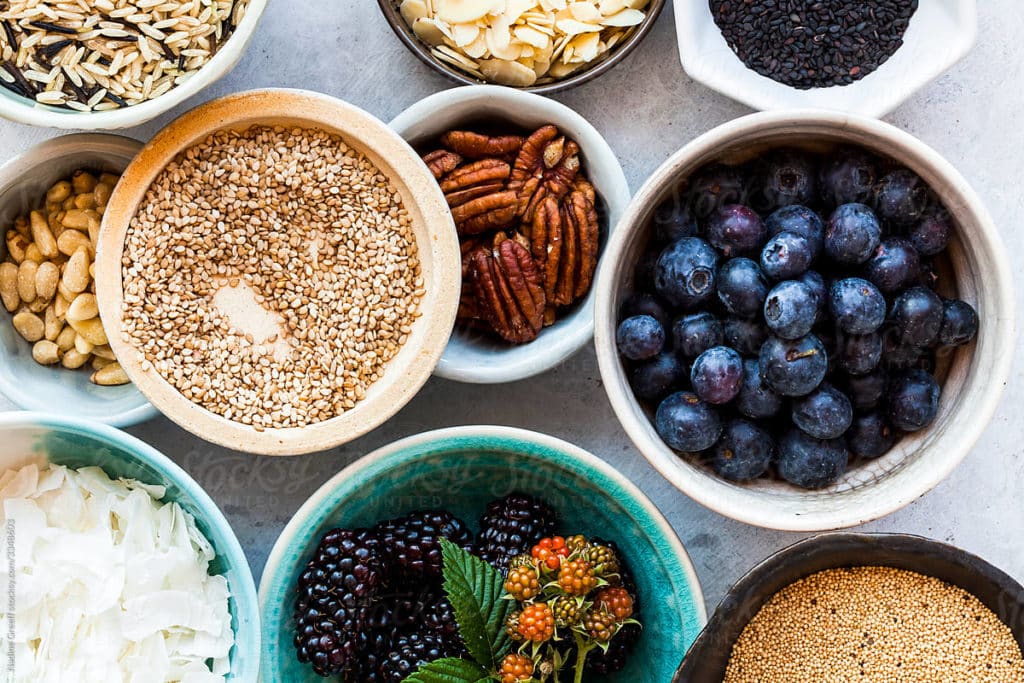Healing HPV involves a mind-body connection. Health requires us to address all areas of our physical, mental, and energetic wellbeing.
HPV can be a tricky infection in that it never completely goes away once the virus makes a home inside our cells. The immune system then plays a role in monitoring the infection and suppressing its activity. In a healthy response, HPV will become inactive and the virus will reside in a dormant state within the skin cells.
Unfortunately, HPV can be reactivated. If the immune system is compromised, the infection can resurface and proliferate again. It is important to establish and maintain healthy lifestyle practices to support the immune system, promote overall health, and keep the virus in an inactive state.
Here, we outline a few daily practices that can help manage daily stressors.
Managing stress
Create a grounding routine
We know stress can significantly impair the immune system and make us more susceptible to viral infections and flu. Regardless of how much we try to limit daily stressors, we will always experience challenges and fluctuating emotions. It is important to incorporate daily practices that help to calm the nervous system, process what you are experiencing, and check in to assess your needs.
Morning grounding techniques offer a place to connect with yourself and start the day feeling calm and in control. Mornings will look different for each of us, so explore and find what works best for you. You may consider starting the day with a short meditation, stretch, breathwork, journaling or read some inspiring passages from a book. It can also be helpful to write down some daily intentions or three things you are grateful for in your life. Find something that you enjoy and can stick to.
Meditation
Meditation has been used for thousands of years to manage stress and heal physical ailments. The benefits of meditation include reduced inflammation and improved gut health. Meditation activates our parasympathetic nervous system which is involved in the rest and digest response. Meditation can improve the absorption of nutrients, promote better sleep, and help manage mental health disorders[1]. To begin a meditation practice, it can be helpful to use a guided program or app. We love calm (www.calm.com) and insight timer (insighttimer.com).
To meditate on your own:
- Set a timer for 5-20 minutes.
- Find a comfortable seated position in a quiet and calm environment.
- Close your eyes.
- Focus on your breath. Count each inhale and exhale up to 10.
- Thoughts will continue to arise throughout the practice, take a moment to notice them, allow them to pass, and then come back to focus on your breath.
- Try doing a “body scan”. Turn your focus to each part of your body, working your way from the top of your head, down your abdomen, into your toes. Notice any sensations, textures, tension, or energies as you go.
- As you finish the practice, take note of how you feel.

Breathwork
The breath helps to ground you to the present moment. Breathwork practices can be used as a simple way to relax the mind and activate the parasympathetic nervous system. Breathwork it can be done in any situation or environment without disturbance because we always have our breath with us. Repeat the following breathing exercise at least 4 times or until you feel your body relax. This practice is helpful in times of acute stress, for example, before a stressful presentation. A simple breathwork routine includes: (box diagram)
- Inhale 4 counts
- Hold
- Exhale 8 counts
- Hold
Other stress reduction tips
- Spend time in nature.
- Phone a friend.
- Talk to a therapist or counselor.
- Limit your phone and media usage.
- Reduce your caffeine intake.
- Journal.
- Create mantras.
- Get enough sleep.
Adopting a healthy diet
We know that diet plays an essential role in supporting our overall health and preventing disease. Most of us also live busy, hectic lives. This means there isn’t always time to prepare the perfect healthy salad or homecooked meal. Planning ready-to-go healthy meals can be the make or break it between grabbing a sugary candy bar or a nutritious homemade bowl for lunch.
Some tips to make mealtime easier and healthier:
- Make a plan. As simple as it sounds, planning can go a long way when it comes to meal prep. Having a sense of your week, when you will be busy, and what foods will nourish you can make the process a lot easier. Take 10-15 minutes each week to plan what dishes you are going to make for the week. Pinterest, Instagram, cookbooks, blogs, etc. offer endless recipe ideas. We love to keep a recipe index, saving healthy recipes we plan to make so when your inspiration runs low you have something to turn to.
- Set aside time each week to cook and prepare food. Cooking doesn’t need to be a daily task when we plan and organize our time. We recommend setting aside at least two times a week to meal prep to keep food fresh and add variety.
- Make double the portions. Meal prepping a large batch can help reduce time in the kitchen later. When you cook a meal, try to make a little extra. This way you will have leftovers that can be eaten for lunch or another dinner. If you have a lot leftover, freeze some extra so that later you will have an easy meal ready to be thawed and cooked. For example, buy double the serving of chicken breasts, marinate them with some lemon juice, oil, and spices. Cook one batch and place the other in the freezer. In the morning before starting the day, take the chicken out of the freezer. It’s then easy to pop in the oven to roast later in the day!
- Cut up veggies and put them center stage in your fridge. Next time you open the fridge for a little snack, they are right there and easy to grab. You will surely find yourself snacking on some healthy veggies.
- Add an extra handful of greens. Another healthy tip we love is to add a handful of green into your dishes. Whether it’s a smoothie or warm bowl of soup, try adding a handful of spinach, kale, or cilantro to your meal. Not only will it amp up the taste, but it’ll amp up your micronutrient levels as well.

Getting better sleep
Sleep is crucial to our health and immune system. As our body has time to rest and renew, the immune system gets activated. The body uses sleep to enhance the formation of immune molecules that defend against bacteria and viruses and builds a stronger immune system for the future. During sleep we also release a hormone called melatonin, which acts as a free radical scavenger, repairing damaged cells[2].
The recommended amount of sleep
According to the National Sleep Foundation, adults need around 7 to 9 hours of quality sleep per night[3].
Tips to get better sleep:
- Take time to wind down: It is important to take time to wind down in the evening, perhaps with a nice warm Epsom salt bath and unplugging from technology. Giving yourself enough time to read a book in bed as your body starts to drift off into sleep.
- Implement a bedtime routine: Going to bed and waking up at roughly the same time every day is the most effective way to regulate your circadian rhythm. Ideally, going to bed around 10-11 P.M. once the sun has set and rising around 6 or 7 A.M. when the sun is rising helps regulate our circadian rhythm and naturally induces sleep.
- Avoid stimulants and alcohol: Limit caffeine intake in the afternoon and avoid alcohol intake to avoid disrupting REM sleep. Opt for herbal teas like chamomile, passionflower, or lemon balm to promote relaxation.
- Keep your environment dark and cool: Our body temperature drops when we fall asleep. Sleeping in a cooler room of 67 to 68 degrees F (20 C) can trick your body into sleep mode by creating conditions that mimic the body’s natural sleep cycle.
Adopting healthy lifestyle practices doesn’t have to be complicated. Remember that it is the little things that you do consistently that add up to bigger changes. It’s also helpful to keep in mind that change doesn’t happen overnight, so stick with it and have patience. If you struggle, try scaling the changes back a little bit before challenging yourself again. Slowly you will notice healthy becomes a habit.
[1] Black, D. S., O’Reilly, G. A., Olmstead, R., Breen, E. C., & Irwin, M. R. (2015). Mindfulness Meditation and Improvement in Sleep Quality and Daytime Impairment Among Older Adults With Sleep Disturbances. JAMA Internal Medicine, 175(4), 494. https://doi.org/10.1001/jamainternmed.2014.8081
[2] Srinivasan, V., Maestroni, G. J. M., Cardinali, D. P., Esquifino, A. I., Perumal, S. R. P., & Miller, S. C. (2005). Melatonin, immune function and aging. Immunity & Ageing, 2(1), 17. https://doi.org/10.1186/1742-4933-2-17
[3] https://www.sleepfoundation.org/excessive-sleepiness/support/how-much-sleep-do-babies-and-kids-need





